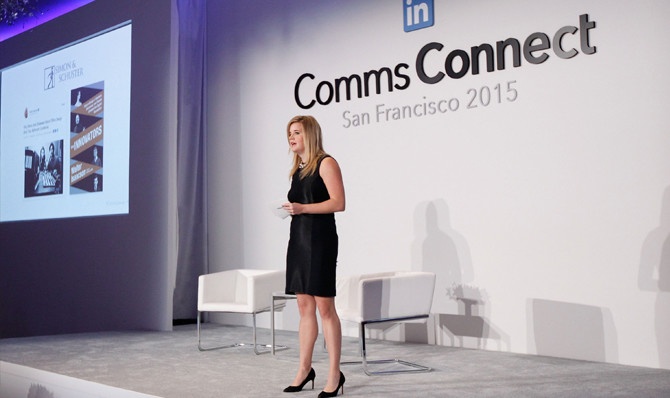LinkedIn Publishing: Caroline Fairchild on Thought Leadership Through Content
Dec 07, 2015 Beth Monaghan
Recently I talked to Caroline Fairchild, LinkedIn’s new economy editor who focuses on venture capital and entrepreneurship, about the opportunity for thought leadership through LinkedIn publishing. She’s part of a global editorial team, headed by Executive Editor Dan Roth, and is focused on finding the intersection of great content and its LinkedIn audience. In her words, the mission is to “create, cultivate and instigate content.”
Since it debuted in 2013, LinkedIn’s Influencer program has grown to 500+ thought leaders, and overall, there are 1 million unique contributors who publish 130,000 posts every week. Caroline’s job is to strategize how she’s going to get coverage on LinkedIn about the news of the day.
Following is my Q&A with her about the opportunities for thought leaders through publishing on LinkedIn.
Beth: How do you become an Influencer?
Caroline: The Influencer program is still invitation-only, although we’re constantly refreshing the mix of leaders. The goal is for our Influencers to reflect the makeup of the professional world. The best way to be considered? The more you write and share on LinkedIn, the better your chances of getting noticed.
Beth: How are articles selected for Pulse channels?
Caroline: Content that hits on timely topics and industry trends stands out. LinkedIn wants people to see content in their feeds that makes them the smartest people at the water cooler that day. It’s not about breaking news, but being a place of breaking views. The best posts tie into what the network is already talking about or the news of that day. Posts chosen for Pulse are selected through a process that’s part human and part algorithm.
Beth: Is there a secret to timing for posting to LinkedIn publishing?
Caroline: There’s no simple answer, but we promote articles for 24 hours. It depends more on the news of the day and where people’s attention is, so matching that timing is the best approach.
Beth: What’s a good number of shares/views/likes?
Caroline: People are too focused on page views. LinkedIn is more focused on engagement. We want people to start conversations. The biggest mistake people make is writing the post, hitting publish and thinking the work is done. In the landscape of content overload, a lot of the work begins after you’ve written. The best way is to share on LinkedIn, Twitter, Facebook, and other channels, but also with your colleagues directly.
Beth: Does original content perform better than syndicated content?
Caroline: It doesn’t matter. We just want to make sure the content is of service to LinkedIn members. However, timeliness matters. I recommend posting on LinkedIn on the same day as you post on the blog if you’re planning to syndicate content.
Beth: How should we approach headlines on LinkedIn?
Caroline: LinkedIn is a different platform, so you should change the headline for the audience there. It’s a place where you’re reaching the world. A few headline tips:
- Clear is better than clever. Nuanced does not perform well.
- A thesis is better than a statement. Go with a point of view. For example, rather than “My thoughts on cloud computing,” try “Cloud computing is the future.”
Beth: What kind of growth does LinkedIn Publishing have plans for?
Caroline: The future is about finding the perfect intersection between content and platform. We want to solve for the fact that there is so much information so how do you find that stuff that’s important to you? We want to help members cut through the noise.
Beth: What’s the best way to integrate LinkedIn posts into a PR campaign?
Caroline: I recommend using it as a place to amplify and extend messages going out in the traditional media. For example, a startup recently secured $275 million in Series B funding and placed a story in The New York Times. As soon as that story went live, they pushed a LinkedIn post on what they’re doing with the funding. It was a great one-two punch.
(Photo credit: Getty Images)

.png)




